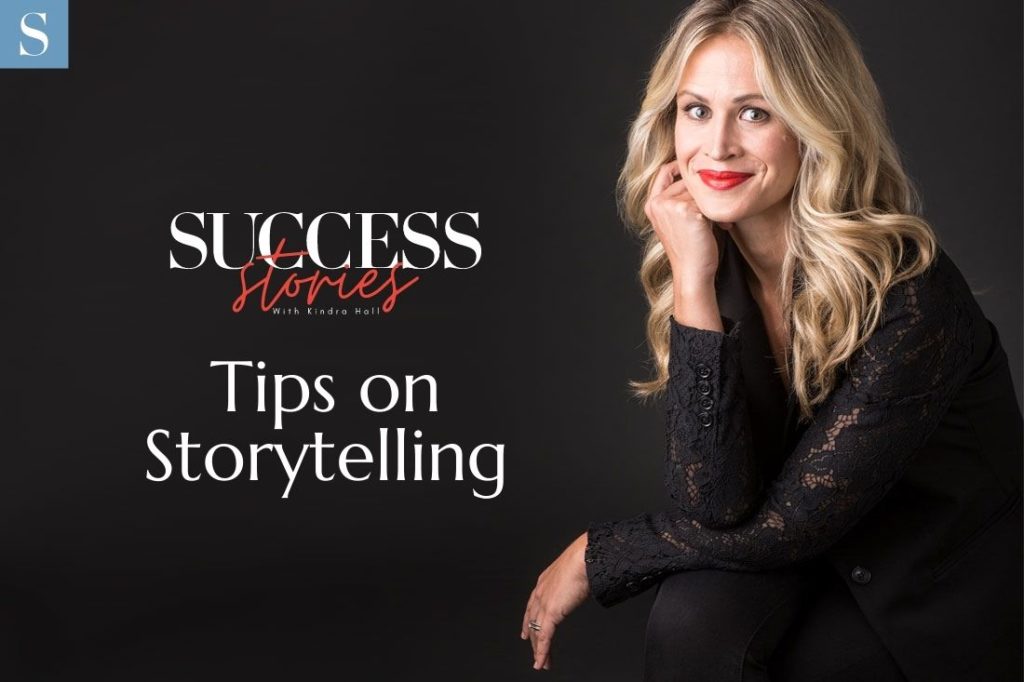Storytelling is the oldest art form we have. Before humans were painting on cave walls and sharpening sticks into spears, we were sharing our experiences of the world. It’s how we kept each other safe and connected emotionally.
Everyone has been through life events, big and small, that other people would benefit from hearing about. And everyone can learn to transform these seemingly disparate moments into carefully crafted stories.
I’ve been committed to helping people with this challenge. In my books Stories That Stick and the upcoming Choose Your Story, Change Your Life, I explain how and why individuals and brands can use stories to better communicate their messages.
Sharing your stories is not an arrogant thing to do. Either you are sharing new information and expanding the minds of those who are listening or you’re sharing something familiar—it’s the power of seeing the beauty in our own lives. That’s a very generous thing to do.
In this week’s episode of SUCCESS Stories, we’ll dig into how to find your own story that needs to be told, and how to tell it—even if it’s sad.
Everybody has a story.
A common misconception about storytelling is that every story has to be wrestled-a-bear/found-hidden-treasure/became-a-spy levels of exciting. In reality, everyone has stories to tell. They don’t need to sound like Oscar-worthy dramas to be interesting or inspiring to an audience.
The reason it’s hard to find stories in your own life is because we see our lives as one long experience, rather than a series of stories. But all of us have done or gone through something that is not only worth talking about, but also fascinating and helpful to someone else.
Maybe you have or had a really niche hobby, have lived somewhere unusual or have a rare job. Even if you’ve had a fairly uneventful life, stories grounded in common experiences can be some of the most enjoyable. Think about times when you were looking for a job or moving house, or about breakups, weddings, childbirth—even the school run. People like to hear stories they can relate to, and everyone has a slightly different perspective to bring to the table.
Our entire lives are one long story; you just have to find the key moments and retell them your way.
Edit to the moments that best serve your message.
Once you’ve chosen which story you want to tell, start editing. Otherwise you’ll end up telling your whole life story in one go, and your audience will be so overwhelmed with information that they’ll stop paying attention.
Focus on two or three key moments within your story. For example, if you’re talking about the time you won a baking competition, you don’t need to include the painstaking process of testing your recipe. Instead, you could focus on the first time your grandma made the cake with you, making the cake by yourself for the competition and finding out that you won.
Narrowing your scope like this means you can dig into the details that will truly engage the audience. For example, think about:
- Your senses: What can I see, smell, taste, hear and touch?
- How do I feel?
- Do I feel differently when I look back at that moment now?
- Was someone else there? What did they say? How did they feel?
- How did time feel? Did everything happen fast or slow?
These close-up details leave listeners with a stronger understanding of your message, compared with reeling off a long timeline of events.
Learn how to tell a sad story.
The most compelling stories are often the ones that elicit the strongest emotions, positive or negative. Which means you may try to tell a story about the most difficult time in your life.
Sharing this kind of story is never easy. But there are ways you can prepare in advance so you’re as ready as you can be when you’re facing an audience.
Ask yourself how you feel about your role in the story.
If you’re concerned about coming across as a victim, reflect on how you feel about that time in your life. If you still feel like your main role in the story is that of a victim, that’s likely how you’ll come across. That’s fine if you’re happy with that, but if not, consider waiting and working to get to a place where you’re able to speak as a survivor, rather than solely as a victim.
Remember whom the story is for.
Sharing our stories can be cathartic: but the real purpose in telling them is to move and inspire our audiences, not ourselves. Reminding yourself of this will help you better tailor your story. For example, instead of describing every single difficult moment, choose a few that typify your experience. You’ll keep that emotional core while making sure you have enough time to wrap up with the uplifting message, which is the whole reason you’re sharing.
Don’t cry.
Even I nearly tear up when sharing certain stories. But crying mid-talk does your audience a disservice. It sabotages the story you’re supposed to be giving to them. To avoid onstage tears, practice telling your story to yourself repeatedly. Then tell it to friends, to see whether you’re ready for an audience. The more times you tell it, the less power it has over you. If you feel yourself getting choked up onstage, stop talking and take a moment to realign your thoughts. Pauses never feel as long to other people as they do to you, and they can help you get back on track with delivering the story your audience needs to hear.
SUCCESS Stories is no longer releasing new episodes on the SUCCESS Podcast Network, but you can still listen to the full conversation below.












